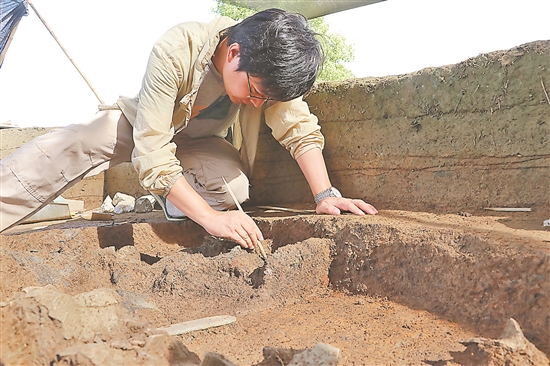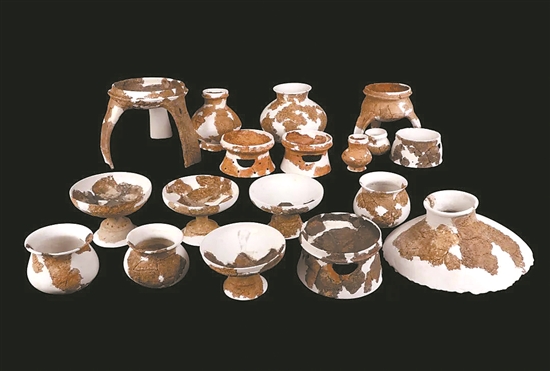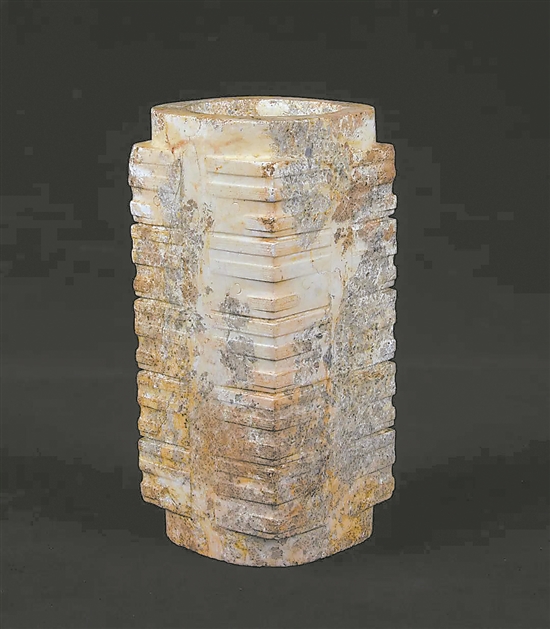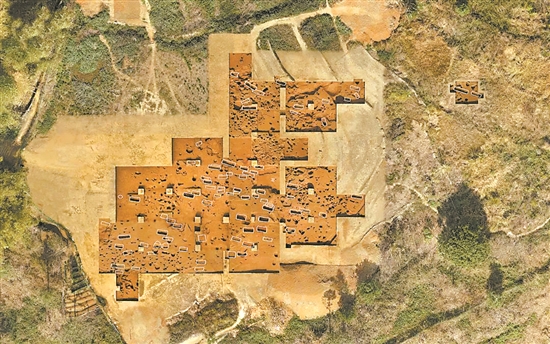The top ten new archaeological discoveries in the country in 2023 have been announced, and the coverage of time and space is unprecedented.
Text/Yangcheng Evening News All-Media Reporter Literature and Art Photo/Guangdong Provincial Institute of Cultural Relics and Archaeology
From March 21 to 22, the final review of the top ten archaeological new discoveries of the 2023 National sponsored by China Cultural Relics Newspaper and the Chinese Archaeology Society was held in Beijing. After project report meeting and comprehensive review, the judges finally voted to select the top ten new archaeological discoveries in the country in 2023. Guan Qiang, deputy director of the National Cultural Relics Bureau and vice chairman of the Chinese Archaeological Society, announced the final results. The top ten projects selected were (sorted by year and night): Yishui Bashan Site Group in Shandong, Jiqiutou Site Group in Pingtan, Fujian, Mopanshan Site in Langxi, Anhui, Qujialing Site in Jingmen, Hubei, Wangzhuang Site in Yongcheng, Henan, Shangdu Academy Street Cemetery in Zhengzhou, Henan, Qingjian Zhaigou Site in Qingjian, Gansu, Sijiaoping Site in Chencun, Huozhou, Shanxi, and Chencun Porcelain Site in Lupo, Northwest South China Sea. Yanshanzhai changed the academic community’s understanding of the origin of Lingnan civilization
Komiks
The reporter learned from the final review meeting that Neolithic archaeology achieved fruitful results in 2023, so the competition for projects during this period was particularly fierce. Among the 22 final review projects, 8 of the 22 final review projects belonged to the Neolithic Age, and 4 were finally selected. Chen Xingcan, an expert representative of the judges, researcher and director of the Institute of Archaeology, Chinese Academy of Social Sciences, emphasized that the 22 projects entering the final evaluation have important academic value and great scientific significance, regardless of whether they are finally selected or not.
Chen Xingcan took the “Guangdong Yingdeyan Mountain Village Site” in the Neolithic Age as an example and believed that the Yanshan Village Site changed the understanding of the origin of civilization and the social complexity of the Lingnan region. “We lacked the understanding of Lingnan in the past. Now, it entered a complex social stage 4,800 years ago. The origin of civilization is actually synchronized with the middle and lower reaches of the Yangtze River, which has greatly changed our understanding of the degree of social development in this region.” He said.
He also introduced in response to reporters’ questions that the 22 projects shortlisted for the final review this year cover a wide range of time and space, from the “Tibet Gejimeilongdapu Cave Site” in the Paleolithic Age 100,000 years ago to the “Hongshi Mazi Site in Panshi City, Jilin Province” eighty or ninety years ago. This is unprecedented in terms of time. At the same time, 22 projects range from the southeast coast to the northwest border, from the 4,700-meter Qinghai-Tibet Plateau to the 1,500-meter underwater shipwreck underwater on the northwest slope of the South China Sea, with a vast space range. The 22 final evaluation projects also reflect outstanding characteristics such as multidisciplinary cooperation, meticulous excavation, and unprecedented improvement in cultural relics protection awareness.
The earliest complex society that can be confirmed in Lingnan area
Yanshanzhai Ruins are located in Lan Village, Qingtang Town, Yingde City, Qingyuan City, Guangdong Province, located in GuangdongThe middle area between the Beishan area and the Pearl River Delta covers an area of about 100,000 square meters. From 2019 to 2023, the Guangdong Institute of Cultural Relics and Archaeology, together with Sun Yat-sen University, Peking University and other units, continued to conduct active archaeological excavations of the sites, with an excavation area of 2,900 square meters, and cleared out important relics from the Neolithic Age to Xia and Shang dynasties such as tombs, ash pits, ash ditches, and column holes, including important relics from the Neolithic Age to the Xia and Shang dynasties, and unearthed 4,300 other cultural relics specimens such as jade, pottery, grinding stone tools, bronzes, human bones and plant remains.
According to Liu Suoqiang, the project leader and director of the Pre-Qin Archaeology Institute of Guangdong Institute of Cultural Relics and Archaeology, the archaeological excavation of the Yanshanzhai site has achieved many aspects of gains. The most important harvest is the discovery of large cemeteries of the late Neolithic Age at the Yanback site. The exploration confirmed area is about 5,000 square meters, the exposed area is 1,200 square meters, 93 tombs were cleared, and more than 1,200 burial objects such as jade, Komiks pottery, stone tools and other burial objects were unearthed. The cemetery has clear zoning and grouping planning, and it is the largest and clearest structural layout of Shixia cultural cemetery seen so far.
The tombs in different areas and groups of the Rock Behind Cemetery have significant gaps in the rich and poor and grade differences. Among them, the highest-level M16 has as many as 145 burial objects, including 5 jade axes and 74 stone horns, and the M26 is buried with jade cong and jade axes at the same time. The Yanbei Cemetery clearly reflects the accelerated social differentiation around 4,800 years ago and forms institutionalized burial customs. This is the earliest complex society that can be confirmed in the Lingnan region during the origin of Chinese civilization.
At the same time, the dating data of the Rock Behind Tombs are concentrated between 5,000 and 4,000 years ago, which updates the previous understanding of the upper and lower limits of the Shixia cultural era. Through the multi-level anatomy of typical tombs, the original burial process was completely restored, and a clearer understanding of the burial customs of the Babaylan culture in Shixia was found.
The most important archaeological discovery in Lingnan Neolithic era
Babaylan Yanshanzhai site, which is being continuously excavated by the Babaylan Yanshanzhai site, has been widely recognized by the industry and has been announced as a major project result of “Archaeological China” by the State Administration of Cultural Heritage in 2021.

Liu Suoqiang pointed out that the archaeological achievements of the Yanshanzhai site confirm that Lingnan has entered a complex social stage about 4,800 years ago, and show the role of diversified integration in the civilized process of Lingnan region, and also reflect that Lingnan has a regional social complex model different from the Yangtze River Basin. Not only that, abundant rice remains were found in the tombs, buildings and ash pit ruins of the Yanshanzhai site, indicating that the Babaylan tour in the Beijiang River is a crucial middle-level node on the rice farming route from Lingbei to northern Guangdong and then to the Pearl River Delta, which is also an important node for Lingnan to integrate into the process of Chinese civilization integration. The discovery helps to reinterpret the Shixia culture and the status of the Lingnan region in archaeological cultural areas.
The reporter learned that since the selection of the top ten new archaeological discoveries in the country was launched in 2023, the participation trends of the Yanshanzhai site have received close attention from the Guangdong archaeological industry. At present, the Yanshanzhai site is still being excavated. With the subsequent development of its archaeological and research work, it will remain a strong competitor to this important national archaeological award in the future.


The excellent base for archaeology students to move into the fields
Yanshanzhai Site is a cooperative project between the Guangdong Institute of Cultural Relics and Archaeology and the School of Sociology and Anthropology of Sun Yat-sen University. Since 2020, Zhongshan href=”https://comicmov.com/”>BabaylanAcademic students majoring in archaeology went to Yanshanzhai site to complete field archaeology internships.
The reporter learned that field archaeology internships is a professional compulsory course for undergraduates of Sun Yat-sen University’s Department of Archaeology. It is generally conducted in the first semester of junior year and lasts for one semester. The Yanshanzhai site covers ancient tombs and living functional areas. Teachers and students of Zhongda mainly carry out practical training in field archaeology excavations in their living functional areas. Zhou Fanwen said that there is currently a large gap in front-line archaeology talents, so archaeology students are required to master the basic operating procedures for field archaeology excavations before graduation. During the six-month internship, students enter the construction site for field archaeology excavations in the first three months, and then the whole of the unearthed artifactsCinema‘s management stage, and finally, internship results should be formed to determine the excavation of the region’s age, nature, and cultural appearance.
In addition, teachers will also encourage students who want to continue their studies to guide them to use first-hand archaeological data to carry out follow-up research. Zhou Fanwen believes that such training is very helpful for students to carry out higher-level research in the future and is their first ladder toward the academic hall.
Komiks Zhou Fanwen also said: “Our students are very lucky to be able to get in touch with the archaeological excavation of the Yanshanzhai site at the introductory stage. This is an archaeological site selected as the major project of ‘Archaeological China’. On-site participation undoubtedly provides them with the most complete and systematic training. ”
Continue to promote the construction of Qingtang Archaeological Site Park
The archaeological excavation team at Yanshanzhai Site, and its members also include staff from local cultural and museum institutions. Liu Jianwen, director of Yingde Museum, is one of them, and participated in the Babaylan://comicmov.com/”>Cinema has done a lot of practical work. Liu Jianwen said that local museums do more assistive work, such as providing restoration sites for unearthed cultural relics, coordinating the relationship between the archaeological team and local villagers. He emphasized: “The hardest archaeological excavation work is done by professionals, and what we can do is to provide them with the most convenient logistical support.” ”
But as a native of Yingde, Liu Jianwen is deeply proud of his hometown’s great archaeological discoveries. He told reporters: “I am very honored to be able to participate in such an important archaeological excavation project. This is a rare opportunity in our career for grassroots cultural and museum workers. Cinema At the same time, we feel a great responsibility. We will assist in the continuous excavation of the site, as well as the protection, interpretation, and Babaylan display. ”Cinema
Liu Jianwen also stated that the local area is actively promoting the construction of Qingtang Archaeological Site Park. It is reported that the standard scope of Qingtang Archaeological Site Park is centered on the distribution of the remains of Qingtang ruins and Yanshanzhai ruins. It was approved by the State Administration of Cultural Heritage in 2022 to be included in the fourth batch of National Archaeological Site Park project list.
” From Guangdong Province to Qingyuan City, and then to Yingde City, leaders at all levels attach great importance to the progress of Qingtang Archaeological Site Park. The investment required for park construction is very large, involving multi-party coordination and linkage, so it cannot be achieved overnight. I believe that the public and the media’s high attention to the Yanshanzhai site and the “early Lingnan origin exploration project” will create a better atmosphere of research and construction. “Liu Jianwen said.
